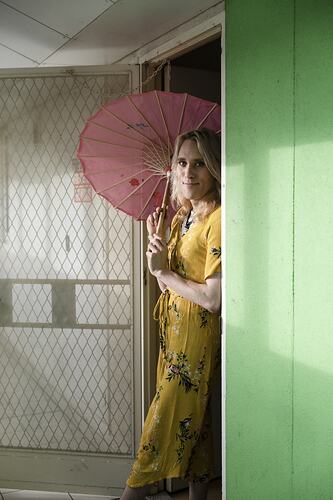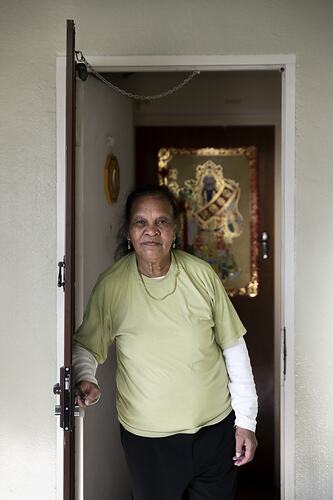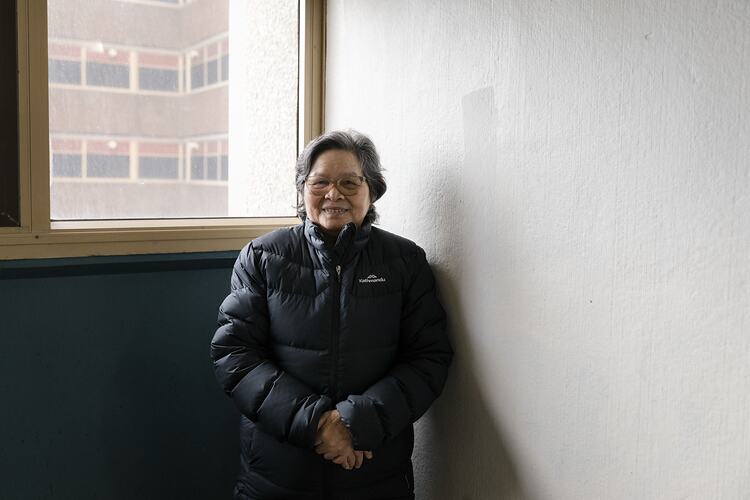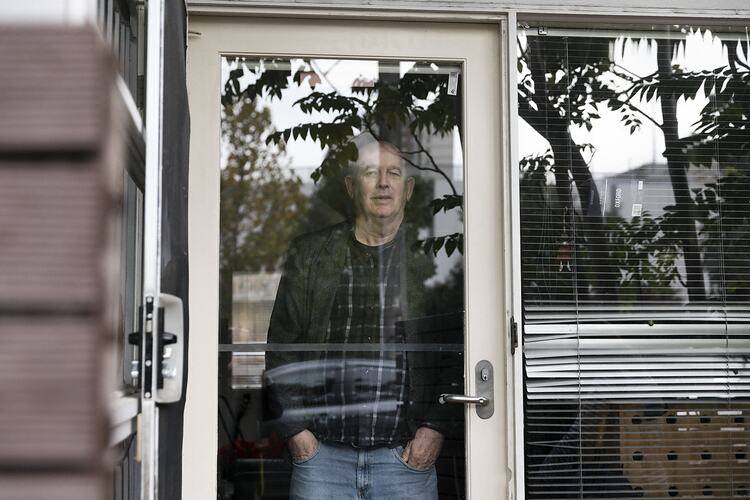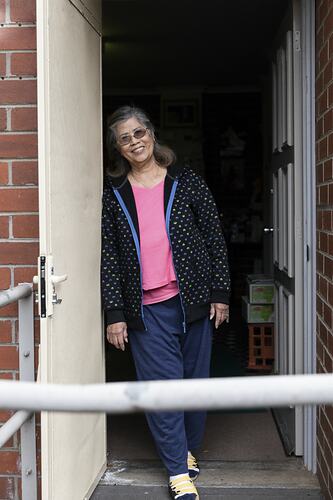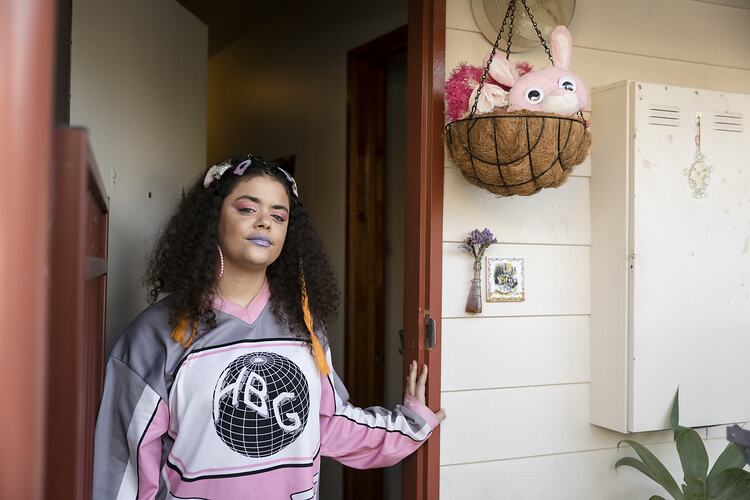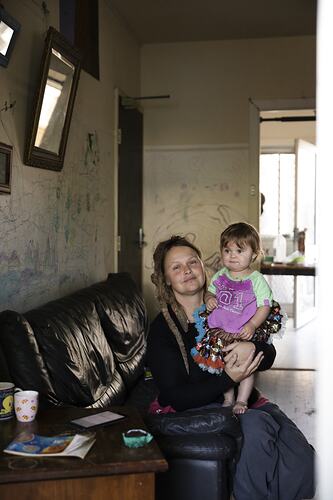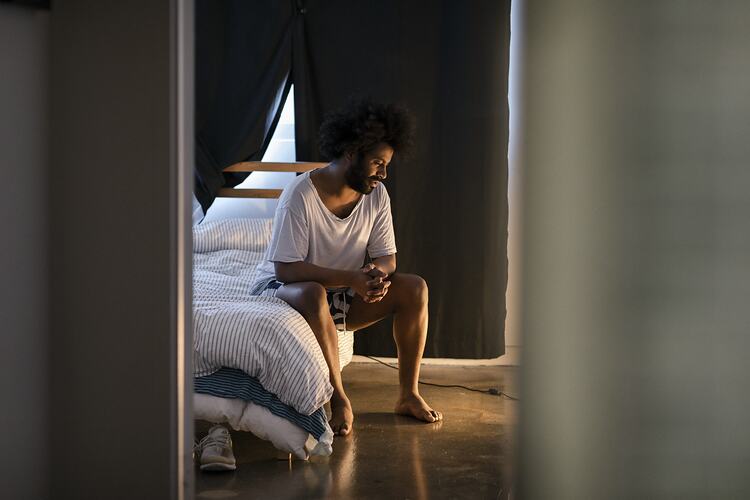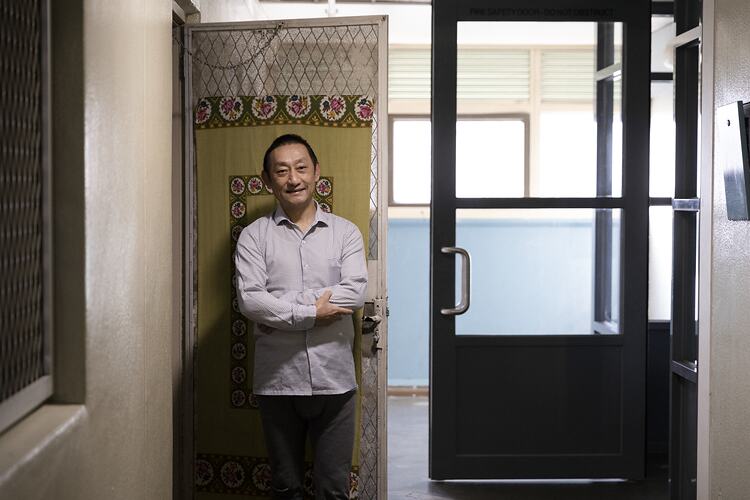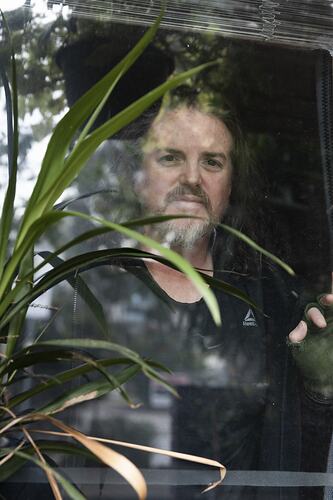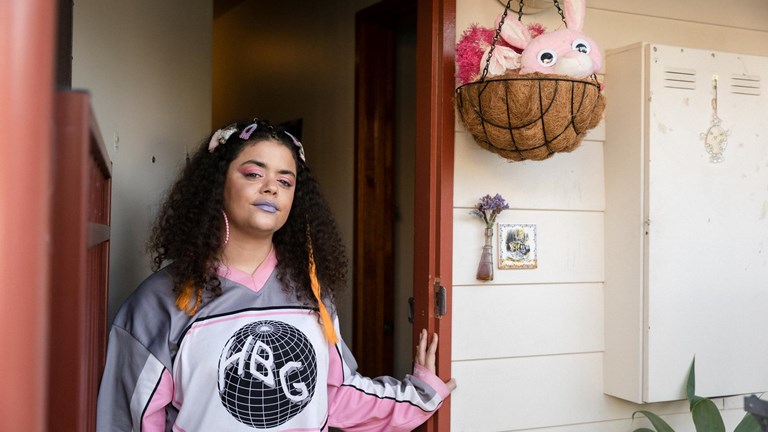
Isolation Portraits
Public Housing
‘My local community were vital to my mental health. The support activities and general feeling of hope were key in maintaining a positive focus.’
These are the words of Adamah Bøge-Nielsen, resident of the Collingwood public housing estate, in reference to how his local community and local neighbourhood house had kept him afloat during the early months of the COVID-19 pandemic in Melbourne. In April 2020, Adamah was photographed as part of a photographic series, ‘Isolation Portraits – Public Housing’ by photographer Bri Hammond, and Adamah’s story is one among many that were captured for posterity through this photographic work.
Bri Hammond is a lifestyle, commercial and documentary photographer based in Wurundjeri Woi Wurrung Country, Melbourne. When COVID-19 lockdowns were introduced across the State of Victoria in March 2020, all of Bri’s client work was suddenly cancelled or postponed.
In the midst of a rapidly changing and uncertain situation, Bri found herself turning her creative energies to documenting the lived experience of lockdowns and isolation.
‘I knew the pandemic was going to be a point of historical significance and I thought it was important to document it in some way.’Bri Hammond
Bri’s first COVID-19 photographic series, Isolation Portraits, captured stories of people in mandatory self-isolation due to vulnerable health conditions, as well as recently returned travellers. Bri took these portrait photographs from a safe distance, with self-isolating families and individuals peering out from their windows from inside their homes.
However, in producing this first series, Bri became increasingly aware of the social inequalities surrounding people’s experiences of COVID-19, and began to question which stories were being recorded or told, and which stories were being sidelined or ignored.
‘I realised that a lot of the responses to the lockdown in terms of creative applications and documentation were coming from places of privilege, including my own. I had documented individuals who were in mandatory isolation, mostly people who were lucky enough to have just returned from overseas travel. I saw countless articles and social media posts of people getting into baking and other new hobbies, or complaining about lockdown when they had a big beautiful house, an income, and everything they needed. I wanted to share a different side of the lockdown story – one that’s not oozing with privilege and comfort.’
Around the same time, Lydia Dobbin, Community Arts Manager at the Belgium Avenue Neighbourhood House, saw Bri’s isolation portraits online and decided to reach out to Bri to suggest a series featuring local residents from the Collingwood and North Richmond public housing estates. 'I had seen Bri’s beautiful isolation portraits via Instagram and I thought it would be wonderful to document the creative, dynamic and resilient ways that residents in public housing were adapting to COVID-19, and share these stories with the wider community.'
Accepting Lydia’s invitation to meet with public housing residents, and supported with funding from City of Yarra, Bri embarked on her next photographic series. Titled ‘Isolation Portraits – Public Housing’, this series was conducted in May 2020 – a period in between lockdowns – and features residents at home in both the Collingwood and Richmond public housing estates. During these photoshoots Bri carried a small recorder to interview residents about their experience of COVID-19, capturing first-person reflections of COVID-19, life in public housing and how residents had adapted and supported one another through this challenging time.
What surprised Bri most was the positivity and optimism of residents in the face of challenges and hardships: ‘I wanted to share a different side of the lockdown story and what I found was a resilient and inspiring community… I guess I had some preconceptions of my own about who I would meet and what struggles they would have at the time. Generally speaking though, they mostly had pretty positive outlooks about the situation, which was inspiring in a really unexpected way.’
For many residents, the financial struggles and mental health challenges associated with COVID-19 lockdowns were tempered by the sense of community that they found through their local neighbourhood houses. Both the Collingwood and Belgium Avenue houses had responded to the challenges of COVID-19 by offering a wide range of activities, including a ‘Lifting Spirits Food Security Program’ and “Iso Arts” activities.
Lydia Dobbin, Community Arts Manager at the Belgium Avenue Neighbourhood House, reflected: 'In normal times we do a lot of music-making, theatre, visual art and regular hip-hop nights and roller discos in on the estates. When COVID-19 hit we had to put all of this on hold, but throughout the year the community came up with ways to keep some of these ideas going, and also some brilliant new creative initiatives…. The community told us they loved the food program not only because they were able to access food each week, but also because it was an opportunity for them to see their neighbours and engage with our staff.'
'The social aspect was really important for people, especially for those who were living alone.’Lydia Dobbon
Izzy Brown, a resident of the Collingwood housing estate, reflected that, ‘I have done many of these activities. It is very important… they feed me and provide a platform for artistic endeavours. They’re great.’
Adamah Bøge-Nielsen, another resident, commented that ‘my local community were vital to my mental health. The support activities and general feeling of hope were key in maintaining a positive focus.’
For many residents, COVID-19 brought a sense of connection and bound families and communities closer together in unexpected ways. ‘The community has looked out for and helped each other more during the lockdown’, reflected Nick Arnott of the Collingwood housing estate, ‘the food program has been fantastic’ and ‘it brought us together more as a family.’
Hip hop performer and rapper Mini Miller lamented the loss of their usual weekly structure and routine, but nevertheless found other ways to feel connected:
‘I have been visiting some Elders to take them their food, just dropping it off on their doorstep. It’s meant I’ve been able to visit them kind of regularly from afar and that’s kind of kept me connected to community.’Mini Miller
Stephen Duff, a resident of the Richmond housing estate, commented that COVID-19 lockdowns had allowed him to slow down and practice a quieter pace of life: ‘Actually for me – it might sound weird – but it’s actually helped me that society has slowed down. I can get caught up with keeping up with the pace of society, so everything quietening down has actually helped me and enforced my journey about where I’d like to go with my mental health.’
Stephen, a Crossings Supervisor, applied for funding through the Belgium Avenue Neighbourhood House and City of Yarra to run a live streaming music event at The Factory in Richmond in April/May 2020. Although the event was very small due to social distancing restrictions, Steven reflected that ‘still, from my perspective, I had a project to engage with, which was important for me.’
Of course, while residents spoke of connection, they also spoke of difficulties and hardships. Musician Joshua Tavares, for example, commented that ‘I’ve found isolation a bit difficult. I’m a professional musician, and all of my events have been cancelled… Isolation is the biggest killer of anyone, and now we’re saying it’s good for you to isolate? Crazy!’
Resident of the Richmond public housing estate Jian (Peter) Zhang spoke of the difficulties of being unwell with diabetes and needing to stop working and stay home. ‘I have been staying home to stay safe from coronavirus’, he reflected, ‘I like singing, so I sing at home. And I rest.’
Collingwood public housing resident Izzy Brown, whilst finding her local community immensely supportive, expressed concerns over ‘too much cops in the hood.’
It’s undeniable that many public housing residents in the State of Victoria experienced extreme hardship during the COVID-19 pandemic, particularly during the Victorian Government’s hard and immediate lockdown of nine public housing estates in Melbourne’s inner-north in July 2020.
Although Bri’s photographs were taken in May, before this hard lockdown occurred, she reflected in late 2020: ‘I think that it’s important to share the stories from the incredible individuals that live in public housing, to erase the stereotypes and stigmas that exist and lead to unfair treatment.’
Looking to the future, Richmond resident Stephen Duff hopes that society can move forward into the future with more kindness, empathy and compassion. ‘Hopefully we all can, as a community, society and ever-changing world… hopefully we all can look after one another a little better from this stage forward.’
Read the resident's full stories
With the support of the Office for Suburban Development, the above 13 photographs have been acquired into Museum Victoria’s State Collection for posterity. These images will provide a lasting reminder of the varied ways that individuals and families experienced lockdown in public housing, and how residents approached challenges and hardships with strength, resilience, and close-knit community support.
This story was collected and written by Catherine Forge and Catherine Watt in collaboration with Bri Hammond and Lydia Dobbin.
